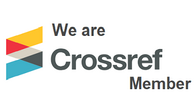Pemanfaatan Media Digital G Suite For Education dalam Pembelajaran BIPA Jarak Jauh di University Of Vienna
Abstract
The Covid-19 pandemic has affected almost all social structures, including education. Learning Indonesian language for Foreign Speakers (BIPA) is one of the teaching fields that are affected. The targets of BIPA learners to be discussed in this study are Austrian citizens who studied Indonesian language at the University of Vienna for winter semester between 2020-2021. The use of various technological media and digitalization strategies carried out during BIPA teaching is a precise effort that is implemented to deal with the effectiveness of distance learning. The research method that will be used by the author is descriptive analysis and literature study to describe digitalization strategies in online BIPA teaching for students in Austria. The purpose of this study is to identify the utilization of digital media G Suite for Education in online BIPA teaching for students at the University of Vienna. However, the ability to access digital media is still considered difficult by some students in the class. These various digitalization and implementation strategies will be described in more detail in the research results as a representation of the effectiveness of using various technology platforms in the teaching of BIPA.
Keywords
Full Text:
PDF (Bahasa Indonesia)References
Affouneh, S., Salha, S., & Khlaif, Z. N. (2020). Designing quality e-learning environments for emergency remote teaching in coronavirus crisis. Interdisciplinary Journal of Virtual Learning in Medical Sciences, 11(2), 135–137.
Anshori, S. (2016). STRATEGI PEMBELAJARAN DI ERA DIGITAL (TANTANGAN PROFESIONALISME GURU DI ERA DIGITAL). Prosiding Temu Ilmiah Nasional Guru (TING) VIII, 194–202.
Aziz, E. A. (2021). Badan Bahasa Targetkan 100.000 Pemelajar Baru BIPA pada Tahun 2024. Badan Pengembangan Dan Pembinaan Bahasa. Kementerian Pendidikan Dan Kebudayaan. http://badanbahasa.kemdikbud.go.id/lamanbahasa/berita/3435/badan-bahasa-targetkan-100000-pemelajar-baru-bipa-pada-tahun-2024
Berk, R. . (2009). Multimedia teaching with video clips: TV, movies, YouTube, and mtvU in the college classroom. International Journal of Technology in Teaching and Learning, 5(1), 1–21.
Husamah. (2014). PEMBELAJARAN BAURAN (BLENDED LEARNING) Terampil Memadukan Keunggulan Pembelajaran Face-To-Face, E-learning Offline-Online, dan Mobile Learning. Prestasi Pustaka.
Ifthakar, S. (2016). Google Classroom: What Works And How? Journal of Education and Social Sciences, 3.
Muliastuti, L. (2016). Internasionalisasi Bahasa Indonesia melalui Pengajaran Bahasa Indonesia Bagi Penutur Asing (BIPA).
Sugono, D. (2003). Bahasa Indonesia Masuk Pasar Bebas. Harian Kompas, 50.
Tran, L. T. (2020). Teaching and engaging international students: People-to-people connections and people-to-people empathy. Journal of International Students, 10(3), xii–xvii.
Zaenuri, M. (2018). PENGEMBANGAN LAMAN MEDIA AUDIOVISUAL BERMUATAN MATERI KEBUDAYAAN INDONESIA SEBAGAI MEDIA PEMBELAJARAN BIPA. Jurnal Pendidikan Bahasa Dan Sastra Indonesia, 7(1), 60–65.
DOI: https://doi.org/10.26499/jbipa.v3i2.4174
Refbacks
- There are currently no refbacks.
Publisher:
Badan Pengembangan dan Pembinaan Bahasa, Kementerian Pendidikan dan Kebudayaan Republik Indonesia
Address: Jl. Daksinapati Barat 4 No.11, RT.11/RW.14, Rawamangun, Kec. Pulo Gadung, Kota Jakarta Timur, Daerah Khusus Ibukota Jakarta 13220 Phone: +62 (021) 4896558

Jurnal Bahasa Indonesia bagi Penutur Asing (JBIPA) is licensed under a Creative Commons Attribution-NonCommercial 4.0 International License.
View My Stats -->





